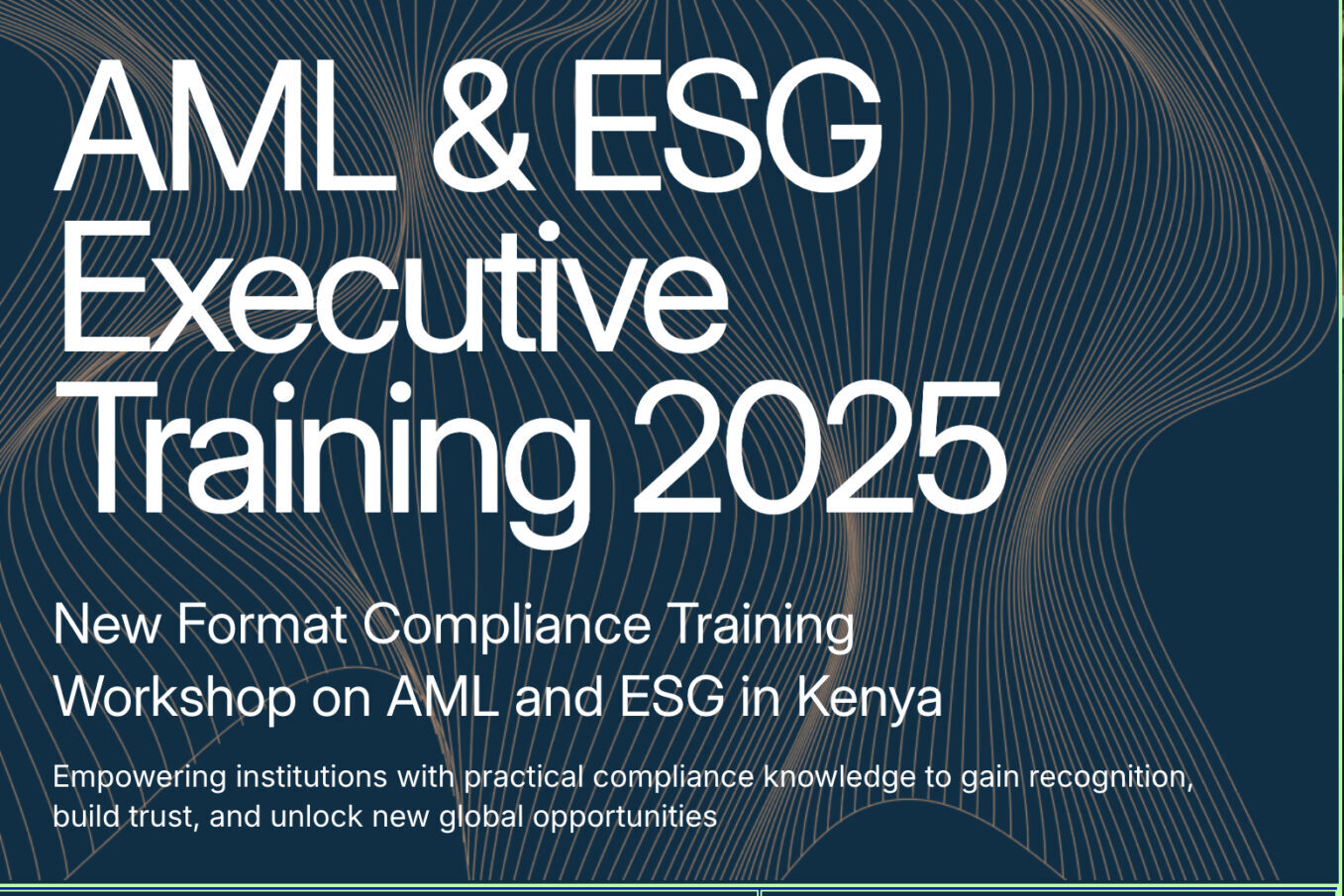Money laundering is a global problem, involving trillions of dollars annually and causing corruption and economic harm. Strict regulatory compliance and Anti-Money Laundering (AML) rules exist, with hefty penalties for non-compliance. It’s not just banks; now, many industries face compliance risks. Penalties for financial crimes have increased, so businesses need robust AML protocols and compliance risk management to stay clear of trouble.
Let’s dive deeper into this and learn more about AML investigations.
What is It?
An anti-money laundering investigation means analyzing suspicious activities to check if a financial institution is being used for money laundering. Understandably, not all the weird activities are money laundering, but it is better to be safe than sorry, right?
Benefits of investigations:
- Mitigating risk: AML investigation serve as crucial tools for banks and financial institutions to identify and mitigate risks compliance associated with illicit financial transactions, thereby minimizing potential adverse impacts.
- Compliance adherence: These investigations ensure strict adherence to regulatory standards established by authorities, effectively reducing the likelihood of non-compliance issues and hefty penalties.
- Combatting fraud: Comparable to skilled detectives, AML investigations effectively detect and thwart illicit activities, thwarting the efforts of fraudsters.
- Preserving reputation: AML investigations act as guardians, uncovering and rectifying dubious transactions, safeguarding the esteemed reputation of a bank and upholding the trust of its clientele.
- Enhancing security: These investigations bolster the overall security infrastructure of banks, fortifying their capabilities to counter potential threats effectively.
- Transparency and integrity: AML compliance exemplify a bank’s commitment to transparency and integrity, earning the confidence of both customers and regulatory bodies through their open and honest approach to their operations.
What Triggers AML Investigations?
An effective AML Compliance Program aims to spot suspicious activities that need investigating. These could include:
- Large or frequent cash transactions.
- Swift, unexplained fund transfers.
- Complex transactional behaviors.
- Odd patterns like quick deposits and withdrawals without clear reasons.
- Hesitancy or failure to provide needed compliance documents.
- Transactions that differ from a customer’s usual behavior.
- Suspicious activity reports from unusual behavior from customers.
- Dealing with high-risk countries, industries, or people associated with illegal activities, financial crimes.
- Unusual patterns spotted by transaction monitoring systems.
- Alerts triggered by specialized AML compliance software.
- Reports of suspicious activities from various sources.
- Internal audits revealing issues with AML protocols.
Investigation Procedure
When an alert surfaces, it’s up to the risk and compliance team to take charge. Here are the primary five steps that outline the AML investigation process
Analyze the Need
When an alert is triggered within a financial institution’s transaction monitoring system, the initial step of a money laundering investigator is to determine whether the flagged activity warrants deeper anti-money laundering investigations. Not all alerts indicate suspicious behavior; some may align with routine transactions. The goal here is to discern if further scrutiny is necessary without committing excessive resources and time.
Thorough Customer Profile Review
Understanding a customer goes beyond mere identification details: every money laundering investigator knows that. It involves comprehending their business practices, verifying the provided information’s accuracy, and evaluating any changes that might have occurred since the initial interaction.
This stage often involves revisiting KYC (Know Your Customer) information, ensuring it remains up-to-date and reliable. Verifying the Ultimate Beneficial Owner (UBO) becomes crucial here to mitigate compliance risks associated with potential discrepancies or new information.
Establishing Behavioral Norms
Analyzing a customer’s historical transactional behavior is vital to establishing what constitutes their standard operations. This involves filtering out regular, expected payments – such as utility bills, rent, or routine business expenses – to establish a baseline for ‘normal’ behavior. Recognizing these patterns helps in identifying deviations or anomalies that might raise suspicions.
Monitoring Behavioral Shifts
Once the baseline behavior is established, monitoring for deviations becomes crucial for an anti-money laundering investigator. Sudden changes in transactional habits, business relationships, or the nature and size of transactions can indicate potential red flags. This includes examining unusual large transactions, unexpected business connections, or alterations in transaction locations, among others. Any significant deviation from the established norm is flagged for further investigation and AML case management.
Evaluating Potential Threats
After thorough analysis and investigation of flagged activities, it’s imperative to assess the seriousness of the situation. This involves scrutinizing all collected data, money laundering investigations notes, and analysis to determine if the observed behavior meets the criteria for filing a Suspicious Activity Report (SAR). Filing timelines are crucial here, as regulatory standards demands prompt reporting to relevant authorities.
Compliance with reporting requirements is critical, as failure to adhere to these standards can lead to substantial penalties.
How to Create an AML Case Investigation Workflow
Crafting an Anti-Money Laundering (AML) case management plan is all about setting up a step-by-step process to suss out and deal with any fishy money business. Financial institutions benefit greatly from establishing a structured AML case management system, ensuring every potential risk is addressed effectively.
So, here’s what usually goes into it:
- Checking customers’ IDs: Making sure the people involved are who they say they are. It’s like double-checking IDs, but for financial stuff: an essential part of work for an AML investigator. This step is crucial in the investigation process, verifying the identity of each participant to minimize risks.
- Keeping an eye on transactions: Always watch the flow of money to catch any weird or suspicious moves. Think of it like having your radar up for anything that doesn’t quite add up. Transaction analysis is a powerful tool to detect and monitor unusual financial activity that could signal money laundering.
- Extra attention for risky customers: Giving more focus to the folks who seem more likely to be up to something. It’s like having a magnifying glass on those customers who might be playing in the riskier zones.
- Reporting anything shady: If something smells off, it’s all about reporting it to the higher-ups or the folks in charge. It’s like flagging those odd things and making sure the right people know about them. Financial reporting is a vital part of the AML investigation process to keep operations transparent.
To keep everything in check and manage this whole shebang in one place, compliance folks usually turn to these special software platforms made just for handling these kinds of financial investigations. They’re like command centers for staying on top of the game and making sure everything’s above board and by the rules.
Detailed Steps in Case Management
- Identification and Assessment: The process begins with detecting suspicious activities through transaction monitoring and customer due diligence. Financial institutions implement systems that generate alerts based on unusual patterns in transactions, allowing investigators to identify potential risks early. This step is critical in the aml case management process, as it sets the foundation for effective investigations.
- Case Assignment and Prioritization: Once a suspicious activity is flagged, it’s crucial to assign the case to the appropriate investigator based on expertise and workload. This prioritization ensures that high-risk cases receive the attention they deserve, enabling timely intervention in aml case management.
- Investigation and Data Gathering: Investigators must conduct thorough investigations, collecting evidence and analyzing transaction histories. This step involves reviewing customer profiles, transaction records, and any other relevant data that may provide context regarding the suspicious activity. Transaction analysis plays a vital role in this phase, as it helps to identify patterns that may indicate money laundering.
- Collaboration and Communication: Effective case management hinges on robust communication and collaboration within the financial institution. Engaging different departments, such as compliance, legal, and operations, as well as external entities like law enforcement, is essential for a comprehensive investigation. This collaborative approach is a key aspect of a successful aml case management system.
- Documentation and Reporting: Accurate documentation is vital throughout the investigation process. Investigators must maintain detailed records of findings, evidence collected, and decisions made. This documentation supports compliance with regulatory requirements and provides a clear trail for audits, including necessary suspicious activity reports (SARs).
- Follow-Up and Review: After closing a case, it’s important to review the investigation process and outcomes. This reflective practice allows organizations to identify lessons learned and improve future investigations, enhancing overall AML strategies and frameworks. The insights gained contribute to refining the aml case management approach for better efficiency.
Automation and Technology Tools
AML Compliance Software
Implementing specialized compliance software provides financial institutions with the tools necessary for efficient case management. These platforms often include features like automated alerts for suspicious transactions, enabling rapid response and thorough tracking of ongoing investigations.
Automated Monitoring Systems
These systems enhance the AML process by offering real-time monitoring capabilities. By automatically scanning transactions and flagging anomalies, organizations can detect suspicious activities as they occur, thus mitigating potential risks more effectively.
Data Analytics Tools
Advanced data analysis tools help organizations uncover hidden patterns within transaction data that may indicate money laundering. Using algorithms and statistical models, these tools enable investigators to detect anomalies and focus on higher-risk transactions.
Artificial Intelligence (AI)
AI technologies play a significant role in enhancing AML investigations. By analyzing large datasets quickly, AI can identify fraud signals and unusual behavioral patterns, allowing investigators to prioritize cases that require immediate attention and reduce the manual effort involved in investigations.
Risk Assessment Tools
These tools are essential for evaluating the risk associated with different customers and transactions. Automated risk scoring helps organizations prioritize cases based on potential impact and likelihood of money laundering activities, ensuring that resources are allocated efficiently.
By integrating these detailed steps and leveraging automation and technology tools, financial institutions can significantly enhance the effectiveness and efficiency of their AML case management. This comprehensive approach not only helps in compliance with regulations but also strengthens the institution’s defenses against financial crimes.
Best Practices for Running Effective Investigations
- Know the rules: Understand the laws where you work to stay lawful. Addressing AML investigation challenges means being aware of the constantly changing legal requirements.
- Follow AML standards: Keep up with AML rules to stay clean and legit.
- Focus on risks: Pay more attention to where the risks are higher to catch suspicious activities.479,4
- Keep learning and teaching: Train your team to stay sharp and informed.
- Use tech tools: Invest in software that spots odd patterns in data.
- Let AI help: Use AI to find fraud signals and unusual behavior.
- Spot dodgy schemes: Use machine learning to identify shady groups or behaviors.
- Centralize your management: Keep all cases in one place for a clear view and better decisions, enhancing AML case management efficiency.
- Keep policies updated: Regularly update your rules to stay current.
- Audit and document everything: Keep records of every investigation for a clear trail, which supports successful AML investigation.
By following these steps in AML case management and using specialized AML case management software, you’ll have a better chance of keeping your financial operations secure from money laundering tricks and maintaining a robust AML framework.
Effective AML investigations are essential for combating financial crimes. With the right certification and training, professionals can enhance their expertise and support the fight against money laundering. Consider enrolling in the AML Foundations Course or Certified Anti-Money Laundering Senior Specialist to take your AML skills to the next level.









